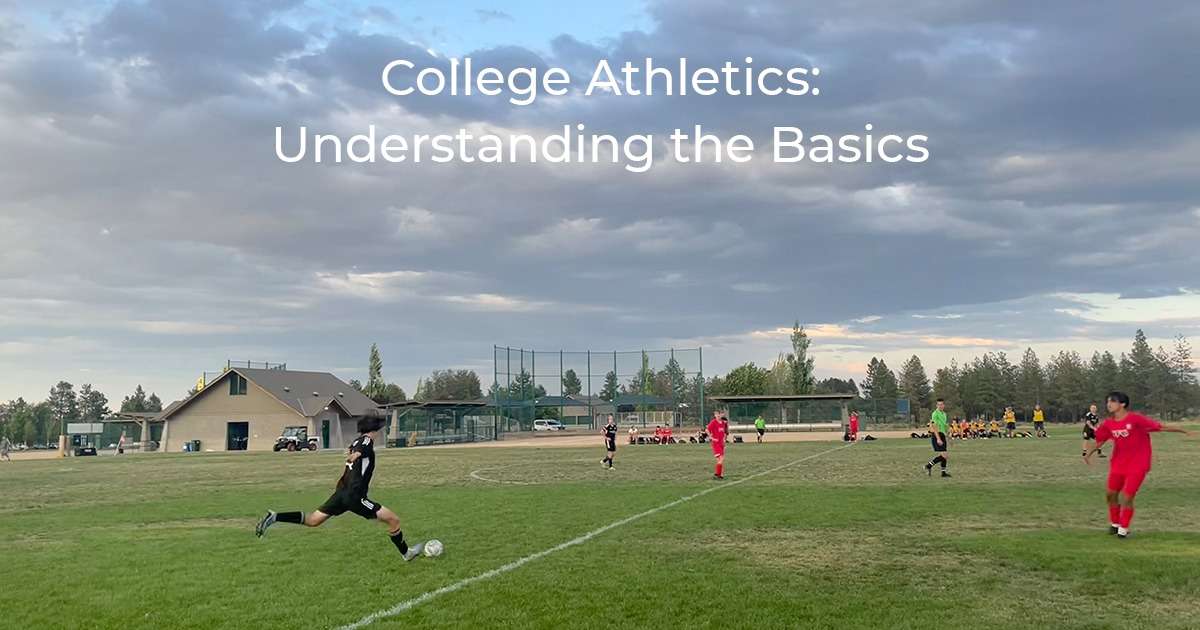
Engaging in collegiate sports provides a great opportunity to balance academic pursuits with the sport that you love. Here is some basic information about the various governing bodies for college sports in the US:
NCAA (National Collegiate Athletic Association)
The primary governing body for college sports in the US. There are three divisions and over 1,200 member institutions in the NCAA: Division I, II and III. Each division has its own set of rules and regulations based on the level of competition and resources available. NCAA Division I and II schools can offer athletic scholarships to student athletes, whereas Division III schools do not provide athletic scholarships but may offer academic merit aid.
Here is a link to the NCAA Eligibility Center.
NAIA (National Association of Intercollegiate Athletics)
The NAIA is another collegiate athletic association in the US, operating separately from the NCAA. It consists of smaller colleges and universities, often with a strong emphasis on the student-athlete experience. The NAIA has around 250 member institutions and includes both private and public schools. They are able to offer athletic scholarships to student-athletes.
Here is a link to the NAIA Eligibility Center.
NJCAA (National Junior College Athletic Association)
The NJCAA oversees the athletic programs at two-year community colleges and junior colleges across the US. With over 500 member colleges, they provide opportunities for student-athletes to compete at a college level before potentially transferring to a four-year institution. NJCAA schools can offer scholarships to student-athletes and many athletes use NJCAA as a steppingstone to continue their athletic and academic careers at four-year colleges or universities.
Here is a link to the NJCAA Eligibility Center.
Club Sports
Club sports are typically student-run organizations that offer a more competitive level of play than recreational or intramural sports but are not at the varsity level. Some college club sports have competitive tryouts and some welcome beginners. Club teams often participate in regular practices, friendly matches, and competitive games and/or tournaments against other college club teams. They often rely on funding from student dues, fundraising and in some cases, support from the institution.
Intramural Sports
Intramural sports in college refer to organized sports activities that are exclusively conducted within the college or university community. These programs are designed to provide students with the opportunity to participate in a variety of recreational sports, often on a competitive but non-varsity level. Unlike varsity sports, intramural sports are typically open to all students, regardless of their skill level, and focus more on fun, social interaction, and promoting a healthy lifestyle rather than intense competition.
When considering playing sports in college, there are important factors to consider:
- Athletic Division and Level: Determine the division and level of competition that aligns with your skills and goals. Each division has different levels of competition and commitment. Sometimes club or intramural sports are the best fit.
- Academic Fit: Ensure that the college offers academic programs that align with your interests and career aspirations. Balancing academics and athletics is not easy, and you’ll want a college that supports your academic success while participating in sports.
- Coach and Team Environment: Research the coaching staff and team culture. A supportive and encouraging coach, along with a positive team environment, can greatly impact your college sports experience and overall development as an athlete.
- Time Commitment and Balance: Understand the time commitment required for your chosen sport and how it fits into your academic schedule. College sports can be demanding, and it’s essential to strike a balance between athletics and other aspects of college life.
- Facilities and Resources: Examine the sports facilities and resources available at the college. State-of-the-art training facilities and access to sports medicine and support staff can enhance your athletic performance and overall well-being.
- Financial Considerations: Evaluate the cost of attending the college and the availability of athletic scholarships, financial aid, or other funding options.
